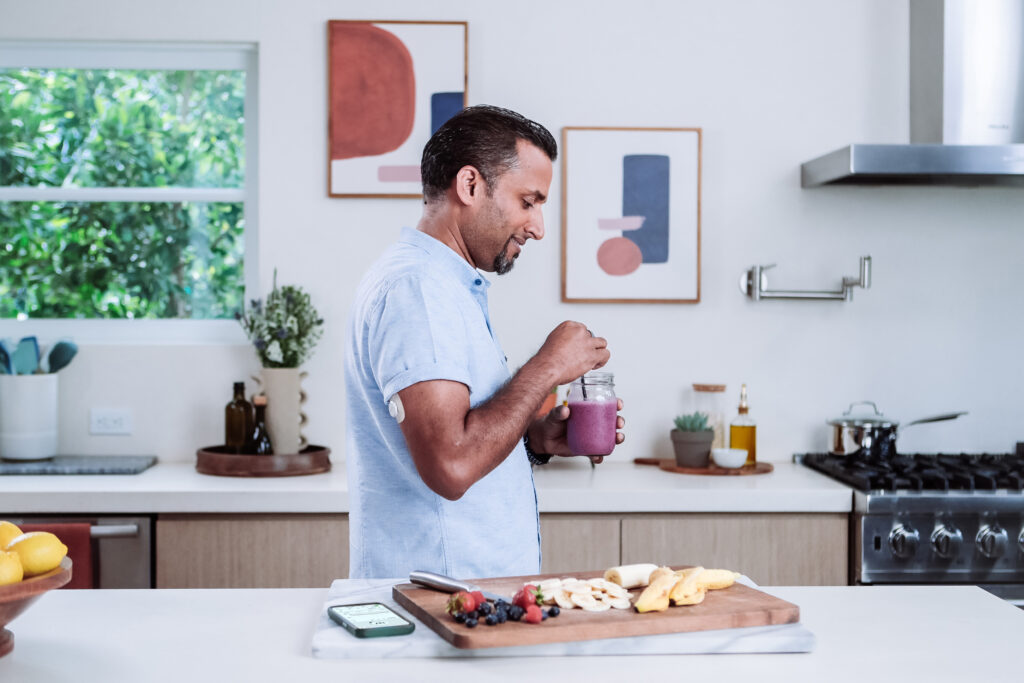Managing diabetes through diet is one of the most effective ways to control blood sugar levels and prevent complications. But what are the best foods for diabetes, and how can you make diabetes-friendly meals without sacrificing taste?
Here are 15 science-backed diabetes diet hacks to help you lower blood sugar naturally and maintain better glucose control every day.

Fill Half Your Plate with Non-Starchy Vegetables
One of the best meal planning tips for diabetes is to prioritize non-starchy vegetables like leafy greens, bell peppers, cucumbers, and carrots. These foods are low in carbohydrates and high in fiber, which helps stabilize blood sugar levels and improve digestion.
The National Institute of Diabetes and Digestive and Kidney Diseases (NIDDK) recommends eating at least two to three servings of non-starchy vegetables per meal to help with diabetes management.
Choose Whole Grains Instead of Refined Carbs
Swapping white bread, pasta, and rice for whole grains like brown rice, quinoa, and steel-cut oats can significantly improve blood sugar control. Whole grains have a lower glycemic index, meaning they digest slower and cause fewer blood sugar spikes.
According to UpToDate, a high-fiber diet with whole grains reduces insulin resistance and improves overall glucose metabolism.
Include Lean Protein in Every Meal
Eating lean protein like chicken, fish, tofu, eggs, and legumes helps stabilize blood sugar levels and keeps you full longer, preventing cravings. Unlike high-carb meals, protein does not cause rapid blood sugar fluctuations.
The NIDDK suggests pairing lean proteins with healthy carbs (such as beans with whole grains) to create a balanced diabetes diet.
Snack on Nuts for Better Blood Sugar Control
Nuts like almonds, walnuts, and pistachios are packed with healthy fats and fiber, making them a great snack for people with diabetes. Studies show that nuts can improve insulin sensitivity and reduce inflammation.
However, portion control is key—stick to one ounce per serving to avoid excess calories. According to The National Library of Medicine nuts and seeds are a crucial part of a diabetes-friendly diet.
Adopt a Plant-Based Diet for Diabetes Prevention
Studies show that following a plant-based diet can lower the risk of type 2 diabetes and help those already diagnosed manage blood sugar levels more effectively. Foods like lentils, chickpeas, spinach, and avocados provide fiber-rich nutrition without causing glucose spikes.
A study on plant-based diets found that eating more whole plant foods reduces inflammation and supports better insulin function.
Sprinkle Cinnamon on Your Foods to Lower Blood Sugar
Cinnamon has been linked to improved insulin sensitivity and lower fasting blood sugar levels. Adding just ½ to 1 teaspoon daily to foods like oatmeal, yogurt, or coffee can help support healthy glucose levels.
According to the NIH, cinnamon for blood sugar control is a natural remedy that can complement a diabetes-friendly diet.
Limit Processed Red Meat to Reduce Diabetes Risk
Eating large amounts of processed meats like bacon, sausage, and deli meats has been associated with an increased risk of type 2 diabetes. These foods contain saturated fats and preservatives that may impair insulin function.
A Harvard Health study found that swapping processed meats for lean proteins or plant-based protein sources reduces diabetes risk factors.
Practice Portion Control to Prevent Blood Sugar Spikes
Overeating—even healthy foods—can lead to higher blood sugar levels. Using smaller plates, pre-portioning meals, and eating mindfully can help prevent blood sugar spikes and support better diabetes management.
The Mayo Clinic recommends focusing on balanced portions with protein, fiber, and healthy fats to keep blood sugar stable.
Pick Low-Glycemic Fruits Like Berries and Apples
Not all fruits are created equal for diabetes management. Low-glycemic fruits like blueberries, strawberries, apples, and pears have a slower impact on blood sugar than high-sugar fruits like bananas and pineapples.
According to Medline Plus, including low-GI fruits in your diet can help regulate post-meal blood sugar levels.
Drink More Water to Help Lower Blood Sugar
Dehydration can cause higher blood sugar levels, as the body struggles to flush out excess glucose. Drinking at least 8 glasses of water daily supports better glucose regulation and helps prevent dehydration-related spikes.
The Mayo Clinic highlights water’s role in diabetes management, recommending it as the best sugar-free beverage choice.
A Smarter Approach to Eating with Diabetes
Making these simple diet changes can help lower blood sugar naturally, reduce insulin resistance, and support long-term diabetes control. Whether you’re newly diagnosed or looking to refine your eating habits, focusing on whole foods, fiber-rich meals, and portion control can make a significant difference.

